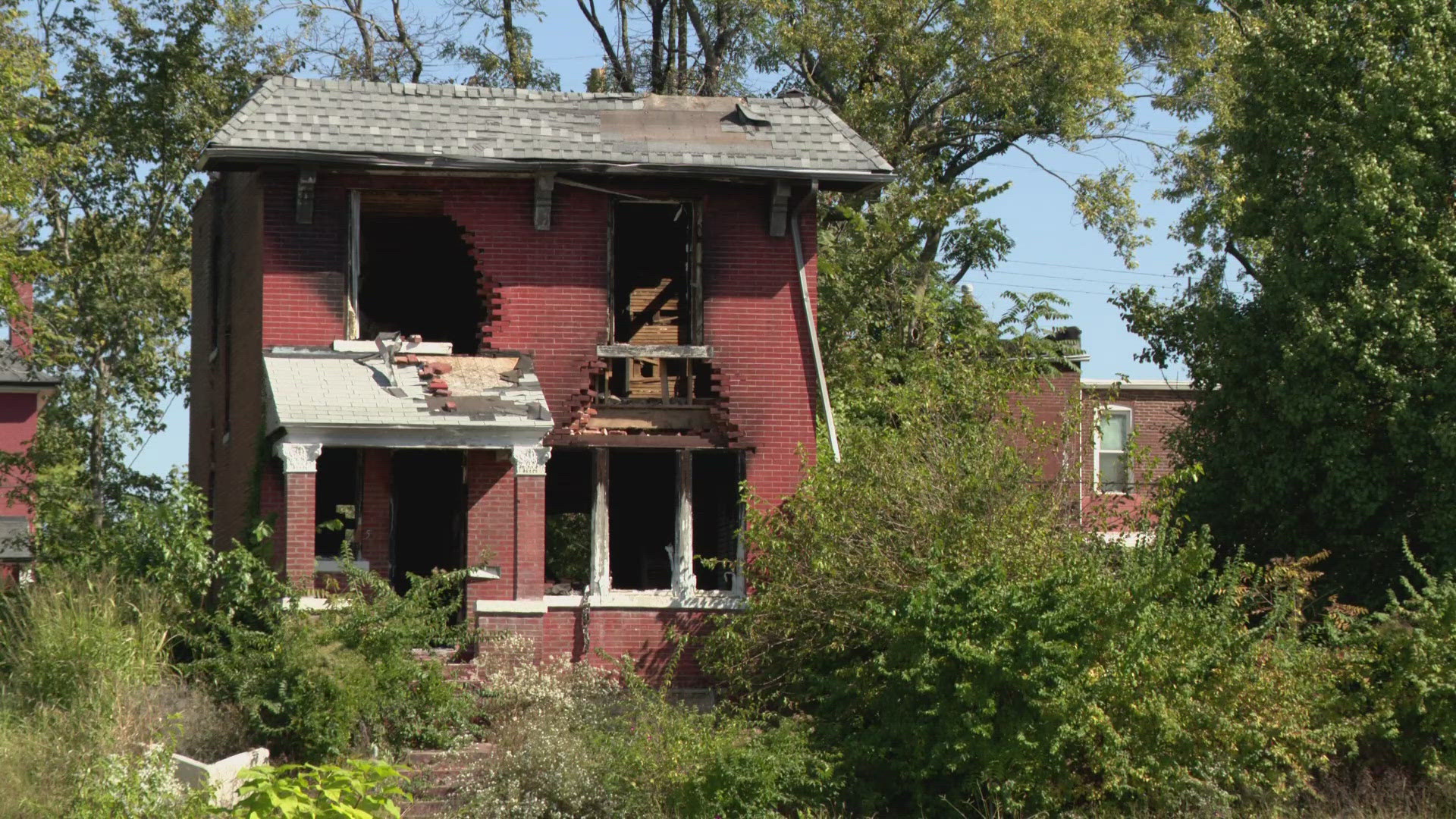ST. LOUIS, Missouri — While St. Louis Mayor Tishaura Jones was welcoming the national conference on Reclaiming Vacant Properties to town at the Hyatt Regency Wednesday afternoon, her Building Division was implementing a new program targeting problem properties for mandatory repairs on the owners' dime.
"It's no secret that St. Louis has lost a big portion of its population since the 1950s, with many of our majority Black and Brown neighborhoods hit the hardest because of racist policies and intentional disinvestment," Jones told the crowded room. "As a result, parts of our city have long dealt with vacant and abandoned properties, dragging their neighborhoods and property values down with them. Turning that around is one of my top priorities."
The city dangled millions of dollars in federal pandemic relief funds for residential property repairs and business expansion grants. If those programs were the carrot enticing people to take action, the mayor's latest program, Stable Communities STL, works more like a stick punishing people who don't.
"Under this program, if owners fail to make needed repairs, the city will exercise our right to hire contractors to complete this work and send the absentee owner a bill," Jones told a lunch hall full of business owners last week.
The mayor's office refers to this blitz as an "all-hands-on-deck" approach to tackle blight. Jones said the Stable Communities STL program so far prompted 18 owners to take action on their own, while 93 others will have to pay the city back for its "stabilization" work or risk losing the property at a tax sale.
"If you are an absentee property owner, read my lips: neglect is no longer welcome in the city of Saint Louis," she said.
The mayor's overture didn't sit well with some of the people who have lived in the city's north side their whole lives. Some described the "stabilization" plan as something closer to stealing in slow-motion.
About eight miles away, the owner of the old Wellston J.C. Penney building on Martin Luther King Junior Boulevard insisted he's constantly involved in the active upkeep of the old vacant building, though he admits he's fallen behind on his dreams to convert the old department store into a community health and wellness center.
Fred Lewis acquired the property from the original owners two decades ago. He calls the building a "gem," though with rusted iron gates sealing its entries off from the public, it's currently more of a diamond in the rough. As a property listed in the National Registry of Historic Places, the building could qualify for state and federal historic tax credits for a developer to come in and rehabilitate it.
Lewis said he tried to apply for the tax credits, but he couldn't complete the mountain of necessary paperwork to qualify.
"Just like the grants money that they're giving out, most individuals are caught up because of paperwork," he said. "Or some people get it and don't have paperwork. So it depends who you are."
Jacob Barker, an investigative reporter for the St. Louis Post-Dispatch, first reported on a city-hired contractor's recent efforts to gain entry into Lewis's building to complete $163,000 in repairs.
"For a city just take it on their own to determine they want to take your building and attach liens on it because of bogus reasons? It's crazy," Lewis said. "But they're attaching this (bill) and the property will be sold at a tax sale within a year if you don't pay that."
Nearby neighbors applauded Lewis for his efforts to maintain a local piece of historic architecture.
"They need to leave him alone," Donald Thompson said. "Election time is coming up," he scoffed. "I forgot. She need a job. It's funny. She getting busy now. Well, she should have got busy when she first got the job."
Thompson and another local property owner, Kenneth McClamb, both in their 70s, described their deep sense of skepticism in city politicians after watching a once-vibrant part of town decay into dilapidated ruins.
"It looks like some place over in another country like Israel looks, or Beirut, and all them others that have been bombed out," Thompson said.
Fighter pilots who drop those bombs overseas could soon receive cutting-edge satellite mapping coordinates from the new National Geospatial Intelligence Agency site coming soon in the city's north side.
The St. Louis Development Corporation, the city's public-private development arm, marked 86 other residential properties for seizure through eminent domain to clear space around the new federally-funded construction site.
"I've seen a lot in this neighborhood and all around Saint Louis," the 75-year-old McClamb said. "I know when big time developers or whatever it is, they put drugs and alcohol in the neighborhood to tear it down and then the developers come and buy it at a lower cost. They call it gentrification. That's what they call it."
"When people want the land back, they destroy it, get it down, and then they rebuild it," McClamb said. "I told that to some person that come talking this eminent domain to me, and I said, 'Man, it'll be on the six o'clock news.'"
When asked what he meant by that, he replied, "Well, you have to read between the lines."
His message to the city's Building Division?
"Leave me the (expletive) alone."
Instead of pressure from City Hall, he'd like a partnership.
He said when other neighbors ask him, "Why haven't you done anything?,' he tells them, "Because there's so much resistance from the city to assist and promote progress."
"We need to have development," Lewis said. "We need to have an influx of opportunity. But we don't need to be overreaching, ignoring the people that have been here."

